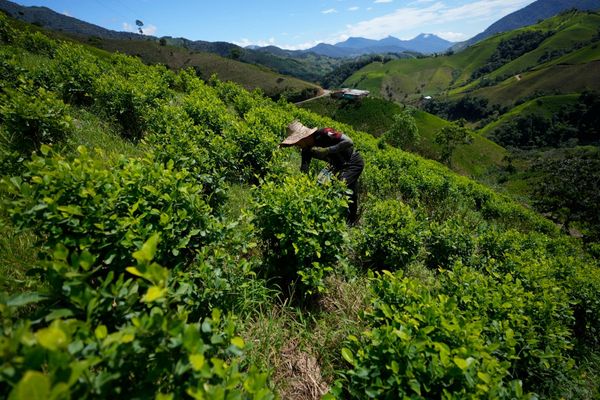IF ever there was a story of hope triumphing over despair and bureaucracy it’s Tom Bowser’s battle to save beaver families from the bullet.
And it was a battle.
His new book, Waters Of Life: Fighting For Scotland’s Beavers, tells of a gruelling struggle that took a huge toll on his family life and mental health.
Even though his farm, Argaty, was eminently suitable for beavers, the process of relocating them took 14 months.
At the same time, NatureScot, the government’s nature agency, was handing out scores of licences to shoot the protected species, sometimes within 24 hours of the application being made.
Although realistic enough to expect some opposition, Bowser was shocked to discover the array of vested interests lined up against him, turning his practical offer to relocate environmentally important animals into a dirty fight.
As a member of the National Union of Farmers (Scotland), he was particularly shocked at some of the tactics used to discredit him and this comes across clearly in the book, as does his dismay at the lack of initial support from the Government and NatureScot.
At one point he nearly gave up in despair, reaching rock bottom when the baby girl he and his wife, Sarah, were expecting stopped growing.
Thankfully, Ellie was delivered successfully by caesarean section on September 21, 2021, but the battle for the beavers continued, taking up so much of Bowser’s time that the couple’s elder daughter, Rowan, started referring to them as “the B-word”.
Different B-words were probably used by her father about some of the individuals who made his life so difficult and turned him from a peace-loving farmer with an interest in conservation into a self-confessed radical.
“Attempting to restore a wild species to our own wild space opened my eyes to some sad truths,” he said. “For years I had been aware that our environment was ailing, but it was only when I tried to do something to help that I truly understood why. Only then did I encounter the kinds of people, organisations and systems that make it so very hard to turn things around.”
The book details how hard he tried to bring people along with him and he is clearly still anguished that he upset neighbouring farmers who he had previously considered to be his friends.
Yet none of their fears of beaver destruction have come to pass and the animals at Argaty have brought numerous benefits to the landscape, demonstrating how they can reduce both drought and flooding risks. They have also saved Bowser thousands of pounds in repairs to a track that was prone to flooding in the recent wet winters.
Despite this, he remains the first, and only, landowner in Scotland to have relocated beavers, even though there are many areas of the country where they could thrive, bringing huge environmental benefits without harming farming or fishing.
“We are in an environmental crisis and the Scottish Government has set targets to halt biodiversity loss and mitigate climate change. We should be welcoming an animal that does these things for free with open arms,” Bowser told the Sunday National.
Beavers, which are native to Scotland, were wiped out in the mid-1600s after being hunted for their meat, fur and a secretion in their urine used in perfumes and medicines.
They returned to the wild here in 2001 after escaping from a wildlife park near the River Earn. From there they spread to the prime agricultural land of Tayside where they were shot because of the disruption they can cause to field drainage systems.
With evidence growing around the world of how important they are for boosting biodiversity, they were given protected status by the Scottish Government in 2019 – although farmers could still apply for lethal control licences if they presented a threat to arable land.
It seemed like a positive move in a country suffering a severe decline in biodiversity but in the first year of the so-called protection, one in five out of an estimated total of 450 beavers was killed under licence.
“No one thought it would be that kind of number just in the first year,” said Bowser.
With alarm growing over the number of beaver kills, Bowser was approached by a friend, who was also a trustee for the Scottish Wild Beaver Group charity, and asked if he would attempt to relocate beavers that would otherwise be shot.
Bowser knew it would upset neighbouring farmers, whom he liked and respected, but believed it was a positive action to take.
“Our story began then of trying to get government policy changed so they could be relocated rather than shot,” he said.
Bowser was given permission to apply for relocation as beavers were already within five miles of his land near Dunblane and a good distance from prime arable areas. Mostly hilly, Argaty is suitable for livestock raising and is also well known as a red kite sanctuary.
With the help of rewilding charities and concerned individuals, Bowser then had to begin the mammoth task of consulting local and national stakeholders who might be affected by a beaver relocation.
“Hundreds of people supported us. Most can get on board with moving an animal rather than killing it,” said Bowser.
Neighbouring farmers, however, were not delighted, as Bowser had predicted.
“That was tough as I had known them my whole life and always got on with them,” he said. “I understand their objections although I don’t think a lot of them were warranted when you boiled them down. Beavers have not destroyed their farms.
“But those conversations were really hard.”
Even worse was having to deal with his own union.
“The farming community is always aware of the law of unintended consequences. If someone wants to move beavers five miles today, they believe someone else will want to move them six miles tomorrow and then it will be lynx and bears and wolves and everything else, so it is an instinctive ‘no’, I think.
“They fought very hard against it and not particularly cleanly and that was very difficult because we are NFUS members. They are our union, I thought we could agree to disagree, but it was a real fight in the end.
“And while I think you should always try to sit down and talk, some people are so extreme that the only option is they beat you or you beat them.”
The book’s sub-heading is Fighting For Scotland’s Beavers for a reason because that is what it turned into.
His battle, which he emphasises is just one chapter in the story of restoring Scotland’s beavers, only began to show progress when the charity Trees for Life won a judicial review against NatureScot over their beaver culling policy and the Scottish Greens entered government after the Bute House Agreement with the SNP.
The first beavers were relocated to Argaty in November 2021 and Bowser believes that, despite all the struggle, it is a story of hope.
“It shows what people can do if they are determined and coordinated enough. It is not easy or particularly pleasant, but we now have beavers here, changing our habitat and making it so much better,” he said.
“In 2022, we had the first beaver kits born on this land for over four centuries. Their parents might have been dead if we had not managed to push through so I hope the book will motivate people to realise things are possible.”
Bowser added: “There is no doubt in my mind that we would not have got beavers if it had not been for public support and then the political support at the time of the Bute House Agreement.
“If enough people show they mind about things we can change policies.”
Waters Of Life: Fighting For Scotland’s Beavers (Birlinn Ltd) by Tom Bowser is out now.







